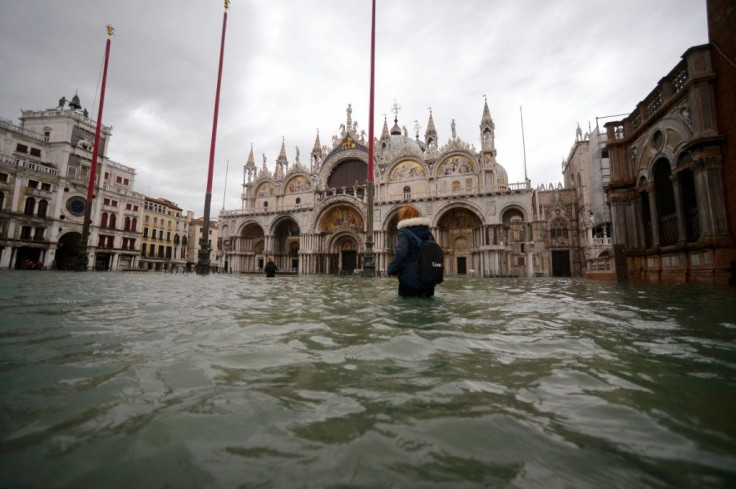Venice Flooding Update: Could Climate Change Inflict Same Fate On Other Coastal Cities?
As floods continue to rock the iconic Italian city of Venice, environmental scientists are urging the world to take the record-breaking waters as a warning of things to come. Sergio Fagherazzi, a coastal geomorphologist at Boston University, was raised in the canal city and had strong words about what the floods mean for the world going forward.
“Venice is like a canary in a coal mine,” Fagherazzi told NBC News. “It’s possible to apply the same concept in the U.S., and it’s very relevant now for any low-lying area.”
Alberto Canestrelli, another Venice native and assistant professor of environmental engineering at the University of Florida, also expressed concern at the scale of the flooding in the city.
“I’m 39 years old and I’ve never seen this,” Canestrelli said. “I’ve never seen boats destroyed or gondolas stranded on top of the bridge. That was shocking. These things don’t usually happen.”
Flooding is far from uncommon in a city so close to the water as Venice. However, as climate change causes sea-levels to rise, catastrophic flooding like the kind that is currently leaving most of the city underwater is likely to become more and more common for coastal cities the world over. Some scientists even say that some areas could see severe flooding daily.
In Venice on Tuesday, floodwaters reached a high of 6 feet and 2 inches. This was 2 inches short of the record high from 1966 and the highest flood waters seen since then. Three floods have struck the city since that high on Tuesday, prompting the Italian government to declare a state of emergency on Wednesday. City officials estimate that hundreds of millions of euros worth of damage has been done so far.
The tourist-friendly area of St. Mark’s Square was one of the hardest-hit areas, prompting the closure of shops, museums, and the area’s famous Basilica. Authorities have also begun barricading canal-facing windows with sandbags to prevent water from flooding crypts beneath the square.

© Copyright IBTimes 2024. All rights reserved.











